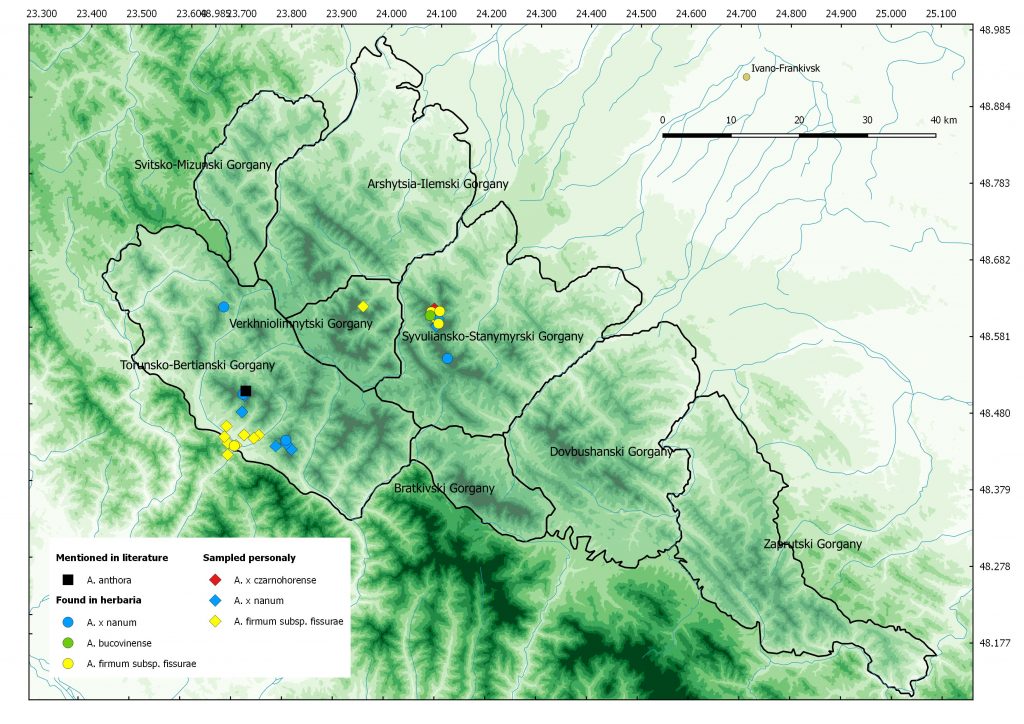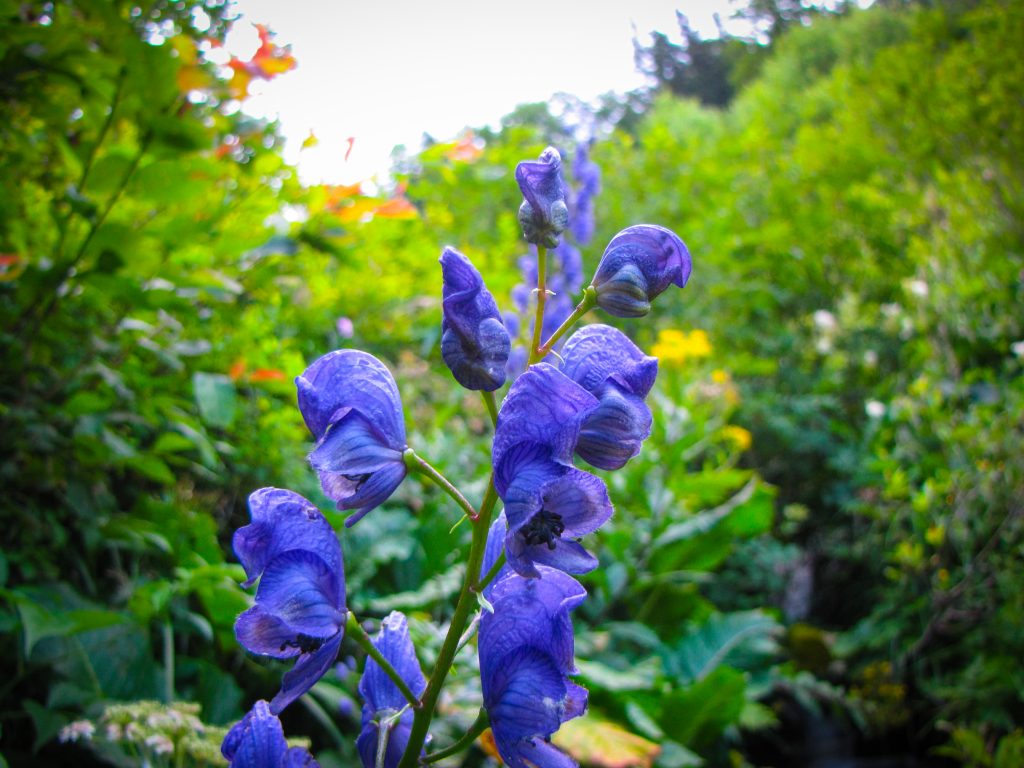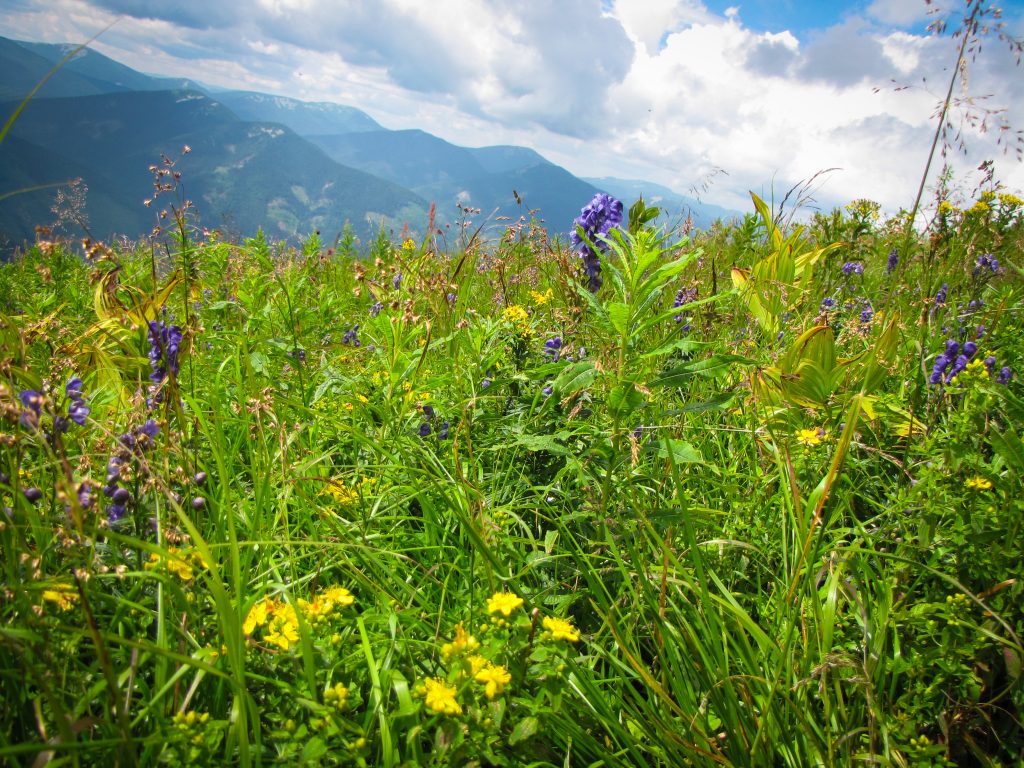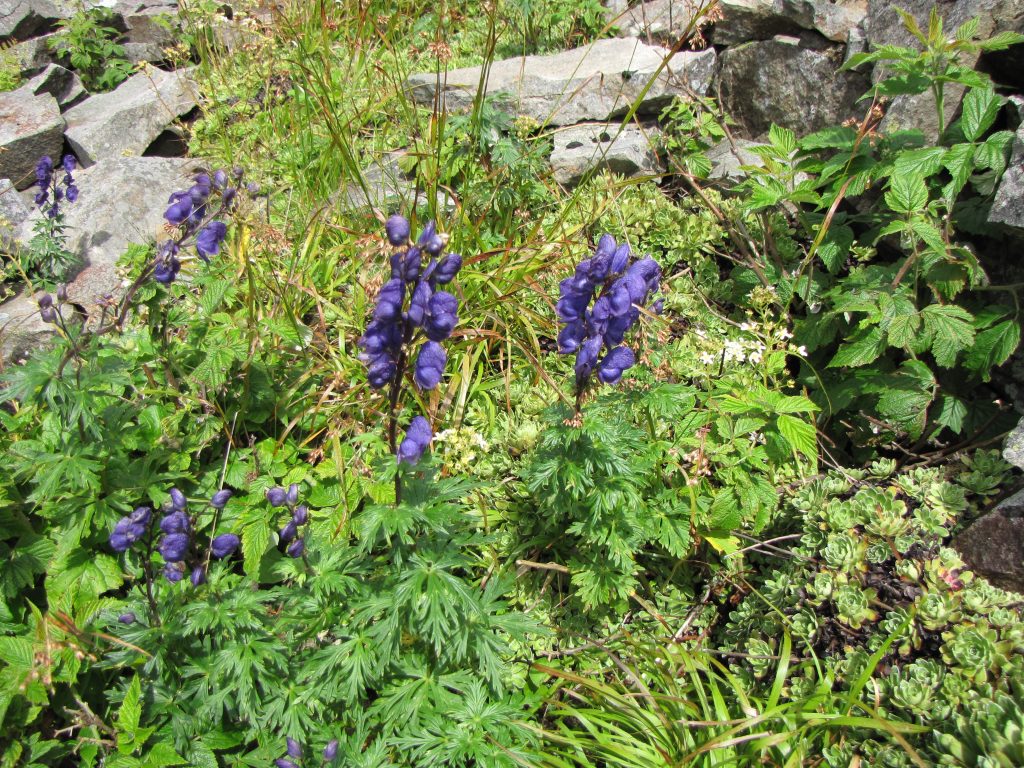Ecological preferences: Heliophytes or scio-heliophytes; hygro-mesophytes, mesophytes or rarely meso-xerophytes; peracidophils or acidophils, rarely – hyperacidophils or subacidophils.
Distribution and habitats in Ukrainian Carpathians: This species is rare for Ukrainian Carpathians, where is mostly represented in Chornohora and Svydovets but also sporadically occurs in Gorgany, Polonynas, Marmarosh and Chyvchyny. It is mostly related to alpine and subalpine belts, but also occurs in higher and lower montane belts. There it grows in tall-herb communities, on stone screes, in rock cracks, sometimes in ecotones with shrubs or just inside of the crown of low shrubs in subalpine and alpine belts. They also could be found along the streams and near mountain lakes. The species usually take a part in Poo-Deschampsietum, Aconitetum firmi, Ranunculo platanifolii-Adenostyletum alliariae, Caricetum sempervirentis, and Juniperetum sibiricae communities.
Distribution and habitats in Chornogora: In Chornohora only subsp. fissurae is confirmed during our own observations, but there are herbarium vouchers of other two subspecies from this region too. There are confirmed three mixed populations on Petros Mt., Turkul Mt., and near the lake Brebeneskul in good and prosperous conditions. However we found also one isolated population on slopes of Goverla Mt., which is in extremely bad condition and represented by just few postgenerative plants. In general A. firmum in Chornogora is represented by ~1000 plants predominantly in pregenerative and generative condition (normal class of vitality) which cover about 1-2 km2. In Chornohora this species is registered in Poo-Deschampsietum, Aconitetum firmi, Ranunculo platanifolii-Adenostyletum alliariae, Caricetum sempervirentis, and Juniperetum sibiricae communities on cambic leptosols, umbric or mollic gleysols and leptic cambisols.
Distribution and habitats in Gorgany: In Gorgany Mts. this species is represented by subsp. fissurae distributed mostly in higher altitudes, but near Kolochava village (Torunsko-Bertianski Gorgany) it goes significantly lower and can be found even at 1200 m a.s.l. Such lowering of these plants is quite unusual for Ukrainian Carpathians. Together with high abundance of group Napellus and other Aconitum taxa in Kolochava surroundings, it can says about presence of one of the most important centres of distribution of the genus in Ukrainian Carpathians. In Gorgany this species is represented by ~10000 plants with domination of generative individuals covering at least 7-10 km2. Main communities hosting these plants there are Phleo alpini - Deschampsietum caespitosum, Poo-Deschampsietum, Arunco-Doronicetum austriaci, Rubetum idaei (such association is registered for this Napellus group only in Gorgany in lower altitudes on the places of old wood cuttings), Polygalo-Nardetum, Hyeracio vulgati - Nardetum, and Senecionetum fuchsii.
Threats: In general, this species is very rare for Ukrainian Carpathians and requires protection due to the intense burning and trampling of its habitats by tourists. Despite of number of samples collected from Gorgany, there is only two main confirmed populations in Torunsko-Bertianski Gorgany and Syvuliansko-Stanymyrski Gorgany, and only one unconfirmed voucher from Verkhniolimnytski Gorgany. In Ukrainian Carpathians it deserves VU category.




